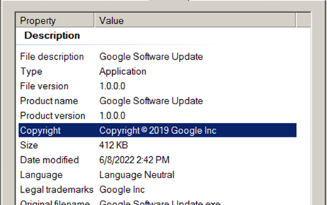AvosLocker Ransomware Variant Abuses Driver File to Disable Antivirus, Scans for Log4shell


Conclusion
While AvosLocker has been documented for its abuse of AnyDesk for lateral movement as its preferred application, we note that other remote access applications can also be abused to replace it. We think the same can be said for the software deployment tool, wherein the malicious actors can subsequently decide to replace and abuse it with other commercially available ones. In addition, aside from its availability, the decision to choose the specific rootkit driver file is for its capability to execute in kernel mode (therefore operating at a high privilege).
This variant is also capable of modifying other details of the installed security solutions, such as disabling the legal notice. Other modern ransomware, such as Mespinoza/Pysa, modify the registries of infected systems during their respective routines to inform their victims that they have been compromised.
Similar to previously documented malware and ransomware groups, AvosLocker takes advantage of the different vulnerabilities that have yet to be patched to get into organizations’ networks. Once inside, the continuing trend of abusing legitimate tools and functions to mask malicious activities and actors’ presence grows in sophistication. In this case, the attackers were able to study and use Avast’s driver as part of their arsenal to disable other vendors’ security products.
However, and specific to this instance, the attempt to kill an anti-virus product such as this variant’s TaskKill can also be foiled. In this example using Trend Micro Vision One, the attempt was unsuccessful likely due to the product’s self-protection feature, which allowed the sensors to continue sending data and block the noted routine. The visibility enabled by the platform allowed us as researchers to capture the extent of this ransomware’s attack chain and replicate the driver file being abused to verify its function during compromise.
Avast responded to our notification with this statement:
“We can confirm the vulnerability in an old version of our driver aswArPot.sys, which we fixed in our Avast 21.5 released in June 2021. We also worked closely with Microsoft, so they released a block in the Windows operating system (10 and 11), so the old version of the Avast driver can’t be loaded to memory.
The below example shows that the blocking works (output from the “sc start” command):
(SC) StartService FAILED 1275:
This driver has been blocked from loading
The update from Microsoft for the Windows operating system was published in February as an optional update, and in Microsoft’s security release in April, so fully updated machines running Windows 10 and 11 are not vulnerable to this kind of attack.
All consumer and business antivirus versions of Avast and AVG detect and block this AvosLocker ransomware variant, so our users are protected from this attack vector.
For users of third-party antivirus software, to stay protected against this vulnerability, we recommend users to update their Windows operating system with the latest security updates, and to use a fully updated antivirus program.”
Indicators of Compromise (IOCs)
Read More HERE


